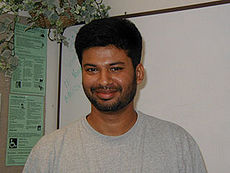What This Course is About
This course is the second in a series of courses about Linux technologies
- ULI101 taught you to be a Linux user. In OPS235, you will move from being Linux a user to being a Linux system administrator.
- As a system administrator, you will be responsible for installing, configuring, adjusting, maintaining, and troubleshooting the operation of computer systems. This is a lot of responsibility, and with that responsibility comes power. You will be able to change anything on the system, and you will also have the ability to damage or destroy the system.
- In this course you will be using a virtualization program called VMware to set up four additional Linux systems as "Virtual Machines" in order to gain experience with different types of system configurations as well as setting up networking between systems.
- Later courses (OPS335, OPS435, OPS535 and OPS635) will teach you to administer Linux VMs (DNS server, e-mail server, Samba server, etc.) -- and to use learn programming languages (such as Python) in order to manage Virtual Machines within a computer network to boost your system administration efficiency.
Learning by Doing
Most of the learning in this course occurs through the hands-on problem solving that takes place in the eight labs and two assignments.
Requirements for Success
- It is very important to stay up-to-date with the coursework, and to practice until you have confidently mastered each task.
- All of the software used in this course is open source software, so you are free to use, modify, and redistribute it. This means that you can install it as many times as you want on as many different computers as you would like. It also means that you can tinker with it -- you can take it apart, see how it works, and put it back together in the same or a different way, limited only by your time and ambition. You are encouraged to experiment and question liberally.
- The notes that you make during the labs and assignments are your reference material for the quizzes, tests, and assignments. Take really good notes, and if you have questions, experiment and consult with your professor.
- Carefully read ALL lab instructions and check your work regularly. The labs have been designed with backup safeguards to prevent the student from losing their work. On the other hand, students may lose their work if they fail to follow lab instructions!
|
Required Materials (for second class)
| Solid State Drive (SSD) | Size: 240 GB | | USB Key
(3.0 perferred) | Size: 32 GB | | Centos7 Full Install iso file (Download
to USB Key) |
Seneca Download
Home Download | | Lab Log-book
(download and print) | pdf | | ! | Dos and Don'ts | tips |
|





